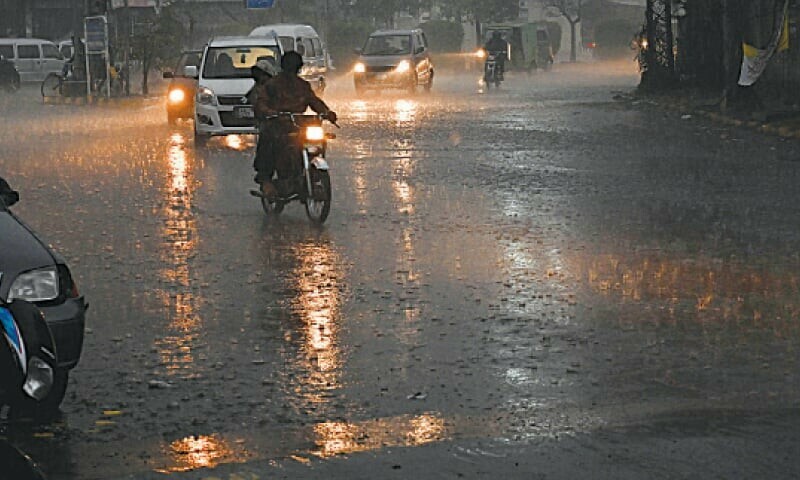LAHORE/ISLAMABAD: The Provincial Disaster Management Authority (PDMA) of Punjab on Wednesday issued a report highlighting a rise in water levels in all rivers and hill torrents in Punjab, as heavy monsoon rains are expected to trigger flooding across the province from July 5.
Meanwhile, the National Emergencies Operation Center (NEOC) of the National Disaster Management Authority has also issued multiple impact-based weather alerts for various regions of Pakistan in light of forecasted severe weather conditions expected from July 2 till July 8.
According to the Provincial Disaster Management Authority, with water levels in major rivers and hill torrents expected to rise sharply, flash floods are likely in Dera Ghazi Khan and urban flooding is anticipated in major cities of the province, including Lahore.
PDMA Director General Irfan Ali Kathia issued the alert and directed all deputy commissioners (DCs) and disaster response teams to remain alert.
NEOC issues alert for severe weather conditions till July 8 as monsoon system pairs with westerly wave
The Provincial Control Room is operating round-the-clock, and emergency services like Rescue 1122 have been put on high alert, he added.
Farmers have been advised to manage their activities accordingly, while tourists and travelers have been urged to avoid risky routes, especially in landslide-prone areas such as Murree and Galliyat.
The disaster authority has warned people against staying in weak structures, venturing near floodwaters, or ignoring weather advisories.
Lightning strikes and roof collapse pose additional risks, it warns, saying children are particularly vulnerable near accumulated rainwater or floodwater.
It also issued a weather alert warning of intensified monsoon rains across the province from July 5, forecasting heavy-to-very heavy rainfall in most districts until July 10.
The advisory highlights risks of flash floods, urban flooding and landslides, particularly in vulnerable areas like Murree, Galliyat, and DG Khan mountains.
According to the Met Office, strong monsoon currents, coupled with a westerly wave, will trigger widespread rains, windstorms and thunderstorms, with the heaviest downpours expected in Rawalpindi, Lahore, Gujranwala, Faisalabad, and Sargodha.
It warns that the low-lying areas in major cities, including Lahore and Rawalpindi, may face urban flooding, while hill torrents in DG Khan and northeastern Punjab could overflow.
Severe weather conditions
Meanwhile, the NEOC said in a statement that these alerts highlight the growing risk of flash floods, glacial lake outburst floods (GLOFs) and urban flooding in different parts of the country.
Low to moderate rainfall was likely to continue until July 5, after which an active southwest monsoon system, coupled with a westerly wave, was expected to enter the country triggering moderate to heavy rainfall and localised thunderstorms.
The most affected regions include upper catchments of major rivers including central and lower Khyber Pakhtunkhwa and Azad Jammu and Kashmir.
Due to this forecast, increased river flows were expected across the country.
In particular, Kabul River Nowshera is likely to swell due to rising tributaries such as Swat, Panjkora, Bara, and Kalpani Nullah.
Inflows into Tarbela Dam may reach the low flood limit. Flash floods in riverine areas, especially where nullahs and local streams converge, may pose threats to nearby settlements.
Simultaneously, the risk of glacial lake outburst floods and landslides had increased in Gilgit-Baltistan and Khyber Pakhtunkhwa, where ongoing high temperatures had accelerated glacier and snow melt.
The situation was further worsened by incoming moist currents and rainfall. Vulnerable glacial valleys and narrow mountain passes may face sudden glacial lake outburst floods, flash floods, road blockages, and disruptions to infrastructure and tourism.
The National Disaster Management Authority has has urged the public to take precautionary measures.
It asked residents in at-risk areas to avoid unnecessary travel, secure important belongings, and prepare for potential evacuation.
Published in Dawn, July 3rd, 2025
